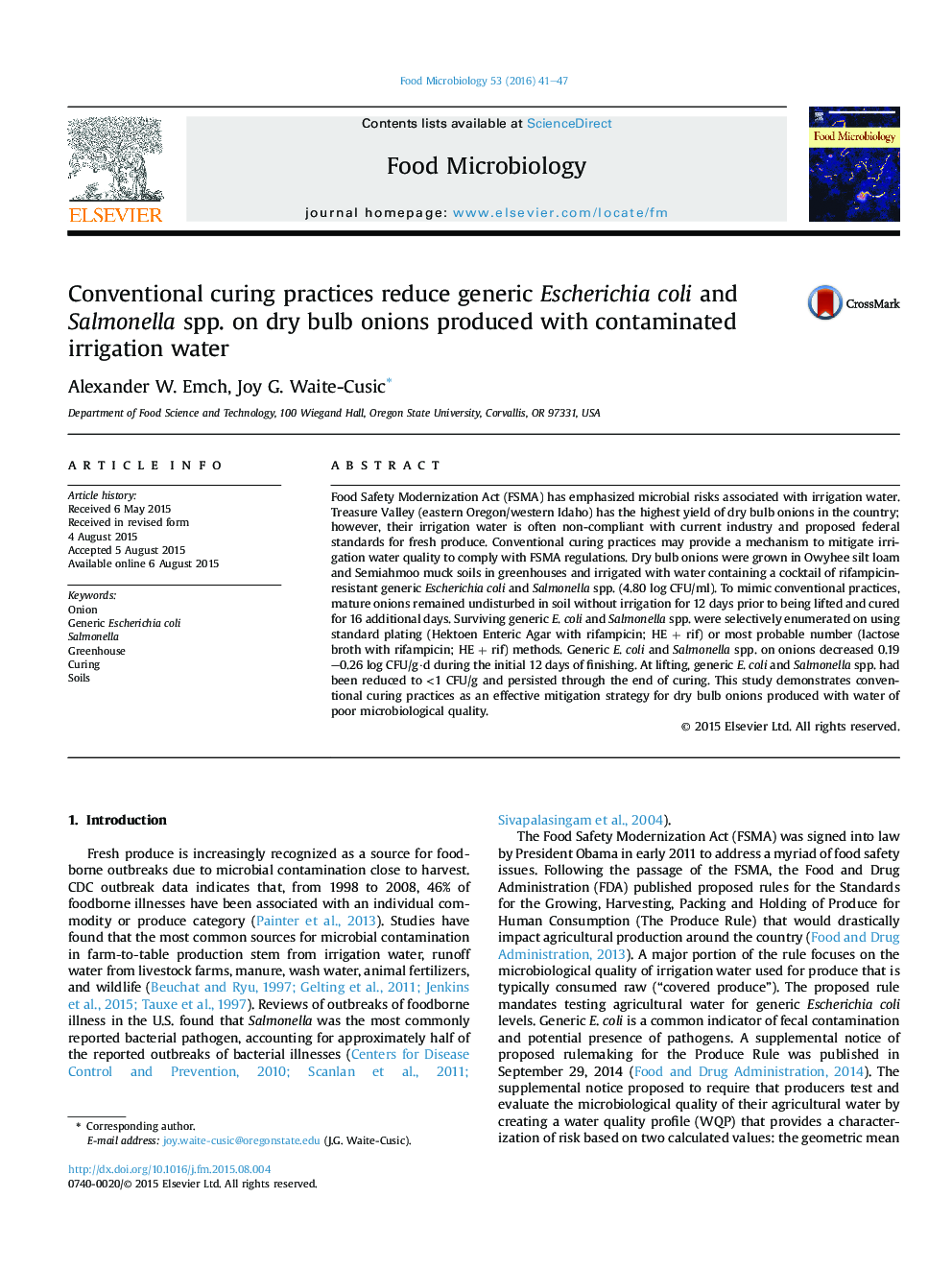| Article ID | Journal | Published Year | Pages | File Type |
|---|---|---|---|---|
| 4362667 | Food Microbiology | 2016 | 7 Pages |
•Conventional onion finishing practices reduce generic Escherichia coli and Salmonella spp.•Generic E. coli and Salmonella spp. are comparable in decay rate and persistence.•Levels of persistence were higher in Semiahmoo muck than Owyhee silt loam.
Food Safety Modernization Act (FSMA) has emphasized microbial risks associated with irrigation water. Treasure Valley (eastern Oregon/western Idaho) has the highest yield of dry bulb onions in the country; however, their irrigation water is often non-compliant with current industry and proposed federal standards for fresh produce. Conventional curing practices may provide a mechanism to mitigate irrigation water quality to comply with FSMA regulations. Dry bulb onions were grown in Owyhee silt loam and Semiahmoo muck soils in greenhouses and irrigated with water containing a cocktail of rifampicin-resistant generic Escherichia coli and Salmonella spp. (4.80 log CFU/ml). To mimic conventional practices, mature onions remained undisturbed in soil without irrigation for 12 days prior to being lifted and cured for 16 additional days. Surviving generic E. coli and Salmonella spp. were selectively enumerated on using standard plating (Hektoen Enteric Agar with rifampicin; HE + rif) or most probable number (lactose broth with rifampicin; HE + rif) methods. Generic E. coli and Salmonella spp. on onions decreased 0.19–0.26 log CFU/g·d during the initial 12 days of finishing. At lifting, generic E. coli and Salmonella spp. had been reduced to <1 CFU/g and persisted through the end of curing. This study demonstrates conventional curing practices as an effective mitigation strategy for dry bulb onions produced with water of poor microbiological quality.
